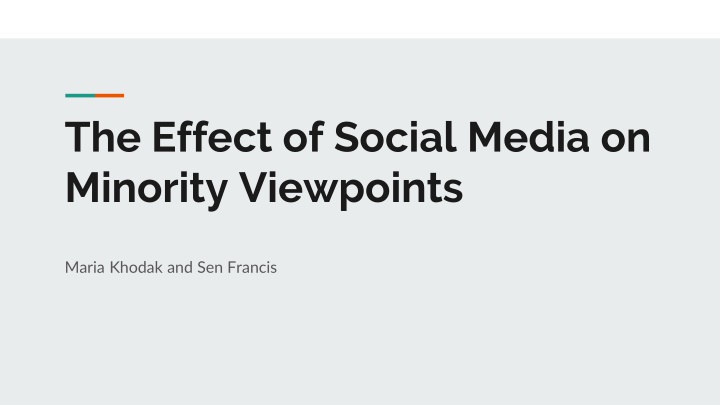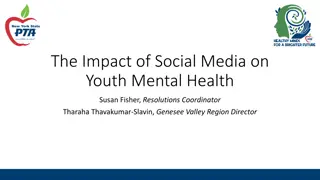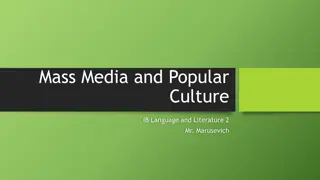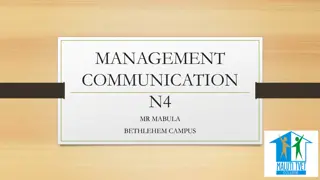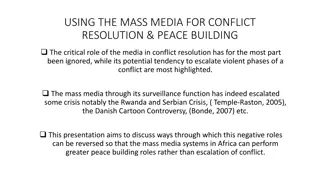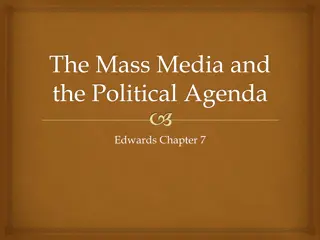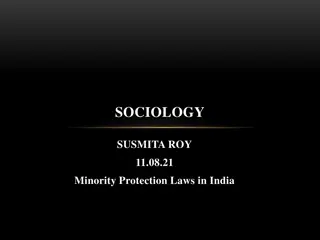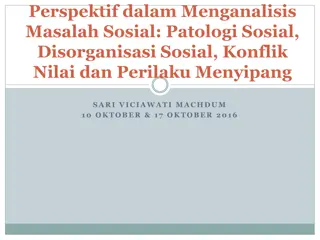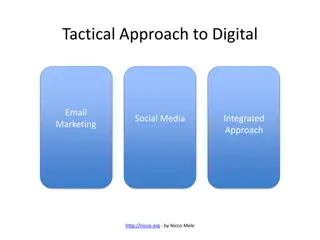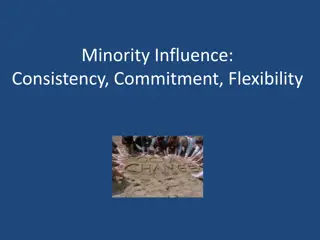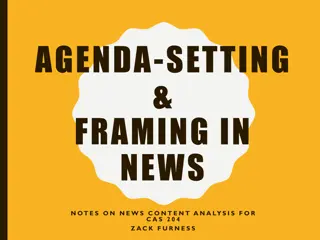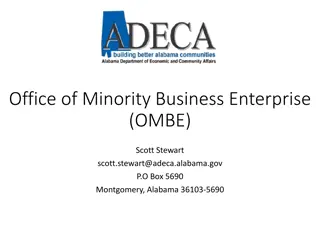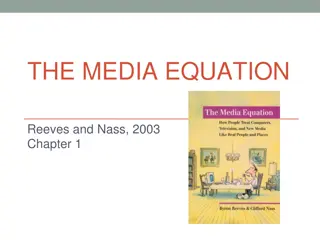Influence of Social Media on Minority Viewpoints and Critical Mass Theory
Exploring the impact of social media on minority viewpoints and how groups with minority opinions can overturn majority ideas using Critical Mass Theory. The study delves into the relationship between social media and the spread of minority views, emphasizing the potential for influencing the majority with consistent effort. Through data analysis and experiments, insights are gained on information spread, influence within networks, and the role of platforms in shaping opinions.
Download Presentation

Please find below an Image/Link to download the presentation.
The content on the website is provided AS IS for your information and personal use only. It may not be sold, licensed, or shared on other websites without obtaining consent from the author.If you encounter any issues during the download, it is possible that the publisher has removed the file from their server.
You are allowed to download the files provided on this website for personal or commercial use, subject to the condition that they are used lawfully. All files are the property of their respective owners.
The content on the website is provided AS IS for your information and personal use only. It may not be sold, licensed, or shared on other websites without obtaining consent from the author.
E N D
Presentation Transcript
The Effect of Social Media on Minority Viewpoints Maria Khodak and Sen Francis
How can a group with a minority viewpoint overturn a majority converged idea?
Data over time showing the adoption of the alternative convention. Gray lines express the popularity of the established convention while black is the alternative. On the left, players failed to mobilize while on the right players succeeded.
Study Conclusion As percentage of minority population increases, percent reaching minority consensus increases As memory length increases, estimated critical mass point increases
Evaluation of Study Interesting results, powerful to know a minority group can influence the majority with consistent effort Although results prove that the minority group can influence the majority, the applicability of the findings to specific social scenarios is unknown
Determine the relationship between social media and the spread of minority views What is this relationship? Can we quantitatively represent this relationship? Rate of information spread Potential reach of information within the network How much influence particular users have within the network?
Our Experiment: Determine how many people a tweet can reach in a network If this can be determined, can make inferences about how social media influences the spread of minority views
Data Processing Python - Pandas, NumPy, NetworkX , Matplotlib Pandas to parse data originally in a CSV NumPy to manipulate data NetworkX to use network algorithms Matplotlib to produce graphs
Data Collection Retweet Networks from Network Repository #occupywallstnyc #damascus #lebanon #tlot
Twitter Retweet Network Overview Sparse Network Vertex = User Retweets = Unweighted Edges Data collection from social/political hashtags ~4K Nodes/Users ~4K Edges/Retweets
Experiment Metrics Harmonic Centrality Measures how quickly a node is able to influence the network Betweenness Centrality Measures how much a node controls information flow in the network Katz Centrality Measures the local and global influence of a node Note in the following slides centrality values are normalized so that they are in the range [0,100]
Mean: 42.162 | Variance: 365.601 Mean: 15.577 | Variance: 335.366 Mean: 2.492 | Variance: 9.046 Mean: 9.804 | Variance: 264.674 Harmonic Centrality Results
Mean: 0.035 | Variance: 2.774 Mean: 0.090 | Variance: 3.908 Mean: 0.210 | Variance: 9.175 Mean: 0.234 | Variance: 10.183 Betweenness Centrality Results
Mean: 7.898 | Variance: 19.034 Mean: 7.103 | Variance: 39.380 Mean: 1.597 | Variance: 5.927 Mean: 4.361 | Variance: 29.037 Katz Centrality Results
Most Influential Node (calculated using VoteRank) #occupywallstnyc Node: 1783 | Degree: 3212 | Harmonic Centrality: 100 | Betweenness Centrality: 100 | Katz Centrality: 100 #damascus Node: 2816 | Degree: 648 | Harmonic Centrality: 8.981 | Betweenness Centrality: 7.753 | Katz Centrality: 16.621 #lebanon Node: 2396 | Degree: 366 | Harmonic Centrality: 3.949 | Betweenness Centrality: 100 | Katz Centrality: 3.863 #tlot Node: 3082 | Degree: 594 | Harmonic Centrality: 82.409 | Betweenness Centrality: 100 | Katz Centrality: 100
Experiment Conclusion Networks with Harmonic Centrality outliers that have high variance indicate that certain users may be the primary/initial source for information Since they spread information the fastest, they have the potential to spread information rapidly All networks have few Between Centrality outliers and have high variance, which indicates that very few users control the flow of information Important because those users have the ability to restrict or allow the users to see certain content Varying Katz Centrality results, but in general certain nodes do have significantly higher influence High degree typically corresponds with high influentialness (according to VoteRank algorithm) Direct connections are important!
Source Code https://github.com/sen-francis/twitter-influence-analysis
Works Cited Rossi, R. A., & Ahmed, N. K. (2015). The Network Data Repository with Interactive Graph Analytics and Visualization. Network Repository. Retrieved from https://networkrepository.com. Centola, Damon, et al. "Experimental evidence for tipping points in social convention." Science 360.6393 (2018): 1116-1119.
